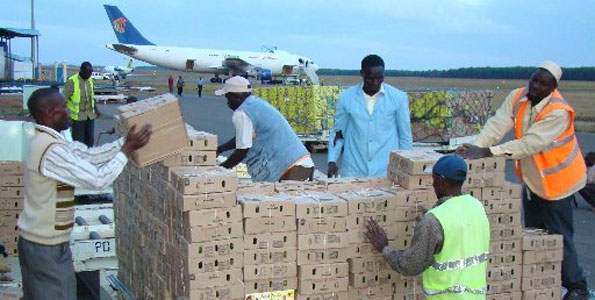Agro-forestry – the key to sustainable food security and nutrition
Adoption of agroforestry practices is key to ensuring sustainable food security and nutrition. Food and nutrition security remains one of the critical focus areas and is a key deliverable that will ensure the attainment of an upper-middle-income economy status by 2030 and commitment sustainable development goal that commits to “Zero Hunger”.
Agroforestry is a land-use management system in which trees or shrubs are grown around or among crops or pastureland to take advantage of their symbiotic interactions and increase productivity. Research has shown that when farmers practice agroforestry, during drought situations they can get up to 80 percent of the harvest they record during a good farming season. Furthermore, during a good farming season, productivity for farmers that practice agroforestry can increase by up to 60 percent. Agro-forestry has the potential to address land use problems.
Planting trees together with crops (agroforestry) greatly increases the yield in the field while also ensuring availability of fruits and timber. It increases soil organic matter, soil filtration and improves fertility. This is because trees in agroforestry increase the soil’s ability to absorb and retain water, produce nutrients for plants, maintain high levels of organic matter in the soil, and moderate soil temperatures.
Soil fertility can be improved by addition of vegetative organic decomposing matter i.e decomposition of leafy biomass and roots. Further, the ability of certain tree species to fix atmospheric nitrogen contributes to better fertility.
One agroforestry practice is alley cropping. This is planting rows of trees at wide spacings with a companion crop grown in the alleyways between the rows. Alley cropping can diversify farm income, improve crop production and provide protection and conservation benefits to crops. Trees can also be grown on contour ridges around homesteads and boundaries. Contour ridges collect water during the rainy season and the residual moisture is good for tree growing even during droughts.
Farmers also need to deliberately leave some trees standing when clearing their fields. These trees provide shade for livestock when they are feeding on stover in the fields.
Agroforestry trees can also be grown in gardens, fields and homestead boundaries. Homesteads and gardens are good places for planting fruit and fodder trees because they are secure and usually have a reliable source of water. Trees around the boundaries may be used as live posts, windbreaks and a source of fruits.
Spatial combinations of fruit trees and diversified vegetable growing can be done in nutritional gardens. Root vegetables (onions, carrots) and runners (cucumbers, melons) are more adapted to be planted near the fruit trees.
This form of agroforestry controls pests and diseases just as crop rotation and also improves soil fertility.
Agroforestry practices reduce the amount of weeds, and increases production of natural enemies against pests. The effects of agroforestry on invertebrate pests and diseases are however dependent on crop type. This mainly applies to perennial crops.
In the long run, agroforestry provides other benefits as well, such as environmental services that may accrue to broader society. These include watershed protection, biodiversity, maximum land utilisation and carbon sequestration.
While agroforestry is a good farming practice, there is generally low adoption by farmers. The main factors affecting farmers include lack of capital, lack of technical skills, lack of quality tree seedlings and lack of manpower.
Low adoption of agroforestry has also been caused by misconceptions and unwillingness of some farmers to adopt new technologies. The colonial methods of farming encouraged tree-less fields as trees were condemned for competing with crops. This in turn has influenced negatively the number of resources dedicated to dissemination and propagation of quality germplasm, which is all crucial for wide adoption of agroforestry practices.
Some trees may compete for good fertile land with our traditional crops, but with technical skills it is the responsibility of the farmer to match tree species in a particular site based on properties and farm management objectives.
Whichever site you select as a farmer; you must make sure you choose a tree species that does not negatively affect your agriculture crop. The trees must be maintained through various silvicultural practices such as pruning and pollarding to minimise shedding effect to receive the intrinsic benefits of trees and agriculture.
Even though trees in agroforestry become profitable over time, some farmers believe that there is a “long-time” lag between cost and benefits in agroforestry technologies. The breakeven point for some agroforestry systems occurs only between one year and five years.
Agro-forestry extension remains hampered by limited knowledge that is available on working technologies. It has been noted that among some farmers, there are many ideas of how trees could be integrated in the farming systems but they have not yet been explored. Practitioners need to appreciate and understand the existing indigenous knowledge skills among farmers and use local knowledge in the design of improved agro-forestry systems.
Trees are important to every farmer and should not be treated as enemies to crop and livestock production.
Agroforestry is economically and ecologically sound with an enhancement of overall farm productivity to ensure food security and nutrition.
*Fortunes Matutu is a forester with the Forestry Commission and has a special interest in social forestry.-chronicle.cl.zw









